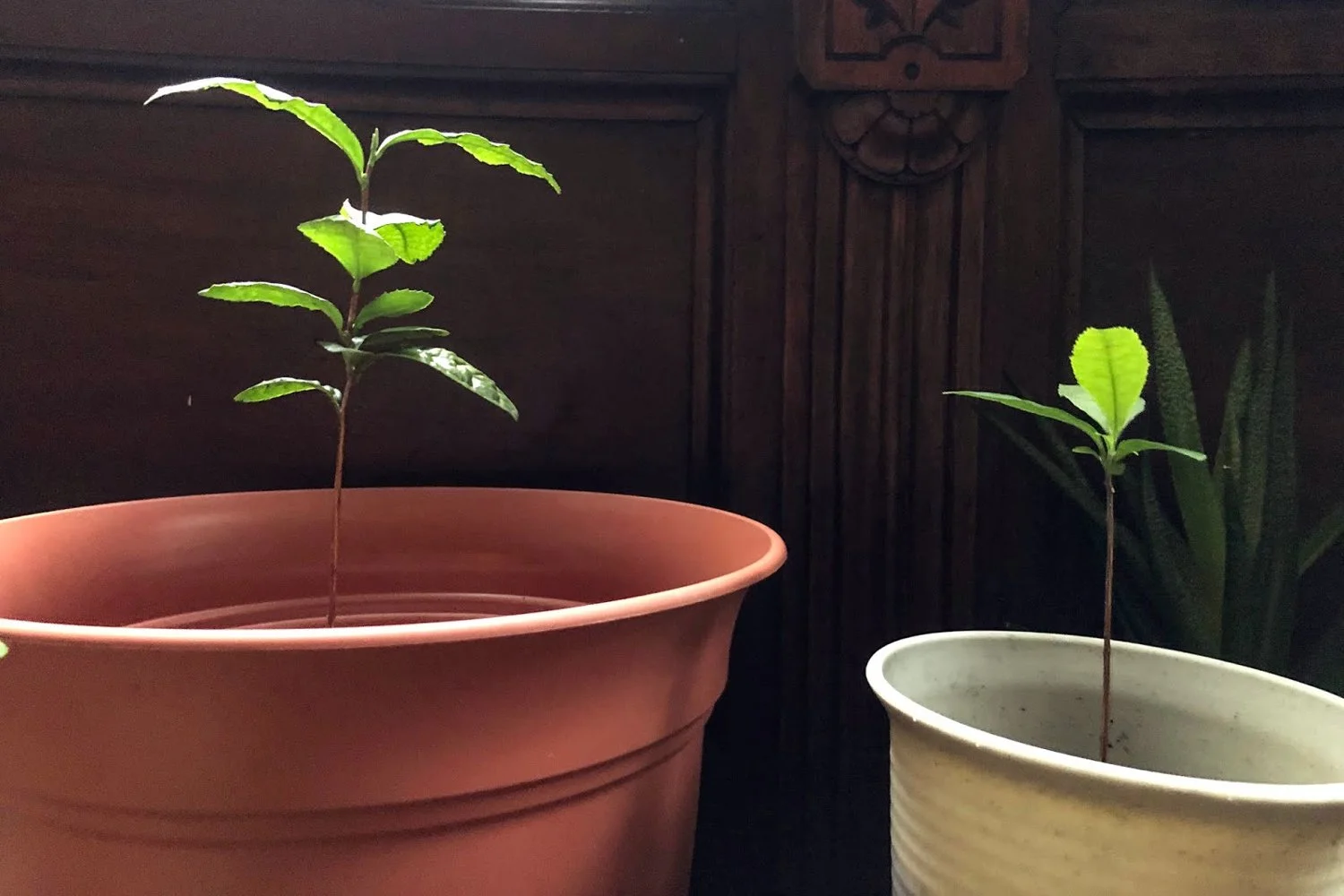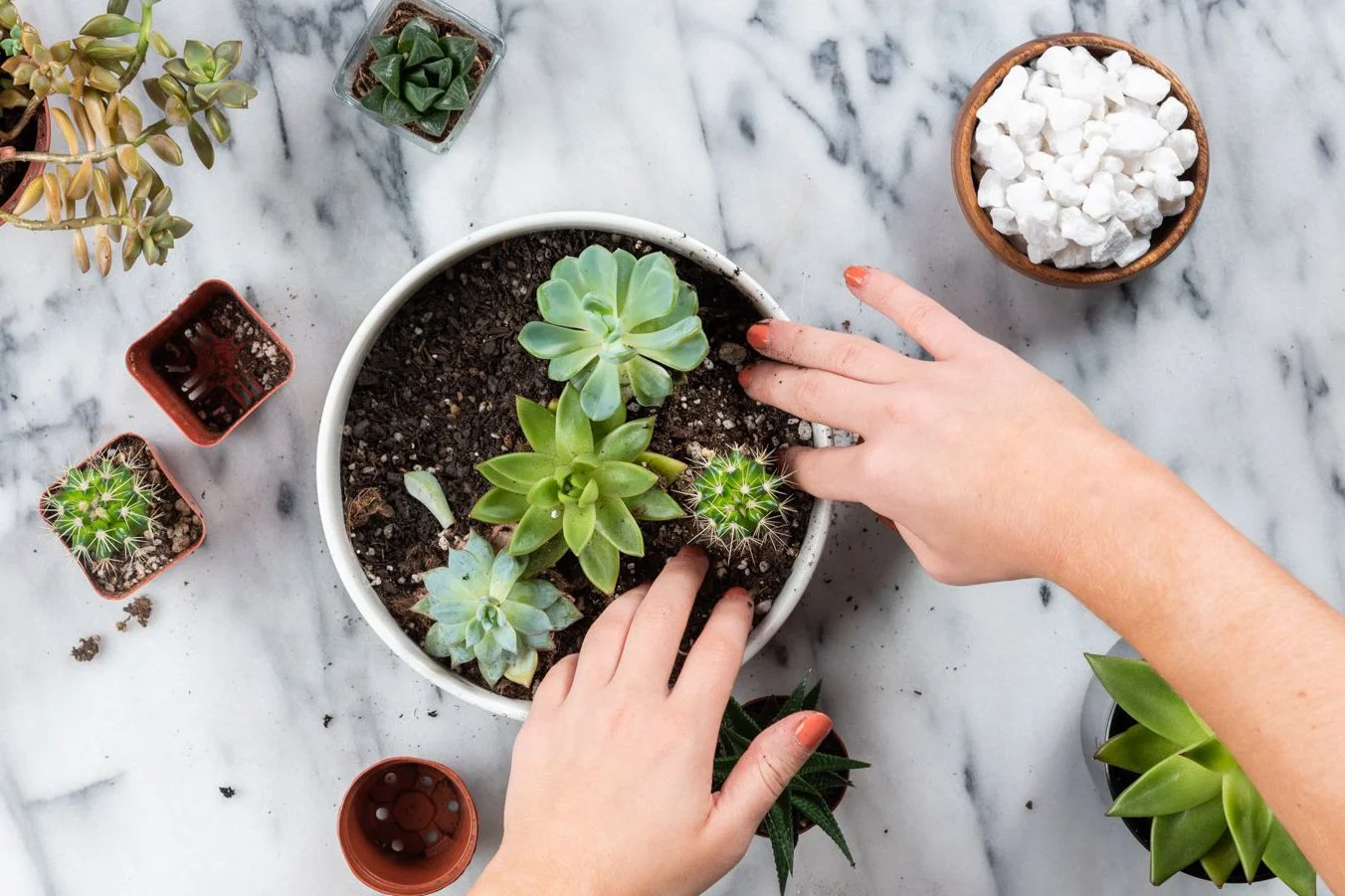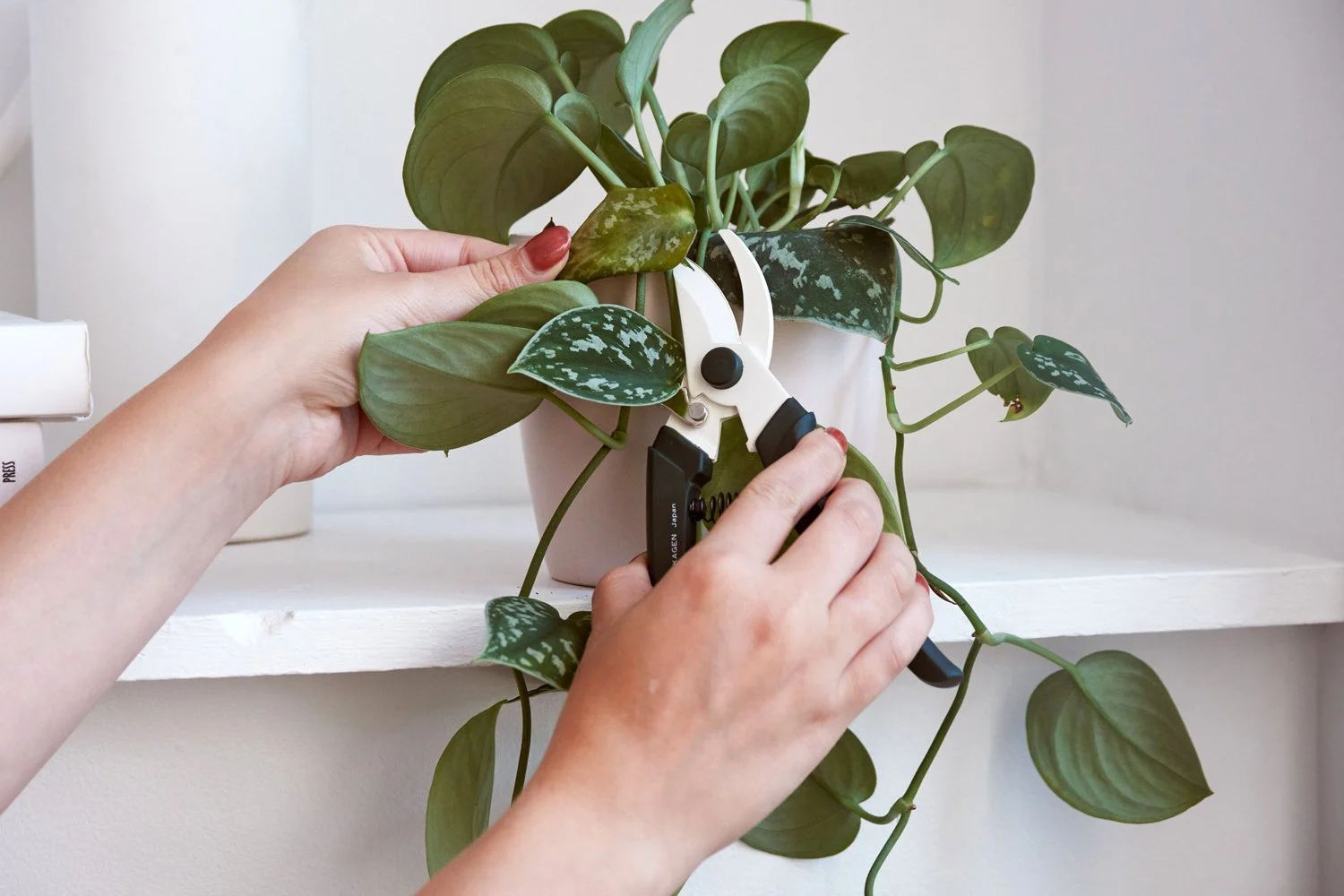A few months ago, we published The Top 5 Houseplant Myths Revealed. Since then, we’ve seen a lot more misconceptions about plant care floating around out there and these myths could be keeping your plants from being their very best. So, here are six more houseplant myths you need to know about. Avoid these pitfalls and your plants will thank you!
Houseplant Myth #6: IT’S BETTER TO WATER WITH SMALL AMOUNTS MORE OFTEN
Actually, the opposite is true. For overall plant health, it’s important that all parts of the root ball become fully saturated when watering, and using a generous amount of water assures that. If you water with just a small amount of water too often, you might be keeping the top inch or so of soil too saturated and leaving the deeper roots dying of thirst.
Water slowly and deeply, allowing the plant to drain (always use a pot with drainage holes! See Myth #2 of our previous post). If you feel like the water is draining too quickly, fully water two times, ten minutes apart, but also know that this quick drainage could indicate that the plant has outgrown its pot and needs transplanting. This will give it a new infusion of nutrient-rich potting soil that will retain more moisture and benefit the entire plant.
Once the soil is saturated, let it dry out a bit before watering again. The amount of time will depend on the plant and the size of the pot. For more information on how often to water, see our blog post The Proper Care and Feeding of Indoor Plants.
Plant Care Tip: As you’re getting to know your plant, pick it up and feel the difference in weight when it is freshly watered or dry. The soil will be much lighter when it has dried out.
Image: Tea Happiness
Houseplant Myth #7: REPOTTING INTO A MUCH LARGER POT WILL HELP THE PLANT GROW LARGER AND FASTER
Speaking of repotting… as a plant outgrows its home, Our rule-of-thumb is to gradually increase the size of the pot. If it currently lives in a 4” pot, then “bump it up” to a 6” pot. If it’s in a 10” pot, then move it to a 12”. This is done for a specific reason: to prevent the root rot that occurs when the roots cannot grow fast enough into the new, constantly moist soil. Also, too much loose soil cannot stabilize the root ball and the plant tends to lean and become weak.
And be sure to respect the time of year when you pot up: between March and September are best, the same as your fertilizing regimen (see myth #8, below). These are the “growing seasons” when plants enjoy new soil and happily uptake nutrients. See our step-by-step guide, How to Repot a Plant for more repotting info.
Plant Care Tip: Transplant your plant into a plastic pot with drainage holes, then place that pot into a decorative cachepot or basket. You can lift out the plastic pot and water the plant in the sink, where it can drain easily!
Houseplant Myth #8: INDOOR PLANTS DON’T REQUIRE FERTILIZER
Fertilizing practices can be confusing and intimidating: Which brand? How much? How often? What do those three numbers mean on the bottle? But the bottom line is that every potted plant needs additional support as the roots grow and use up all the nutrients in the existing soil. That is why we recommend fertilizing during the “growing season,” which is March – September. And since different plants require varying formulas, and some appreciate a lighter dose year-round, be sure to ask for recommendations from one of our indoor plant experts the next time you stop by. We’ll make sure you have the right fertilizer for your specific plant or plants.
Plant Care Tip: Those three numbers on the fertilizer label? That is the N-P-K ratio, the percentage of nitrogen, phosphorous, and potassium in the fertilizer. Different ratios are helpful for different needs, such as blooming or producing lush leafy growth.
Houseplant Myth #9: ALL INSECTICIDES WORK FOR EVERY PEST
Just like fertilizers are formulated for different plant needs, Insecticides are specific as well. While some are effective for spider mites, others are not. Fungus gnats are better controlled with one type and mealybugs with another. And the level of infestation will indicate whether you need a liquid spray or a “systemic” approach (when an insecticide is applied to the soil, allowing the plant’s root system to uptake the solution into its stems and leaves).
Learn more about identifying and treating indoor plant pests in our post: What’s Attacking My Houseplant? And, of course, we have experts at Swansons to advise and recommend just the right thing in person.
Plant Care Tip: Always consider your pets and small children when applying insecticides, even natural ones. Read the label carefully and keep insecticides and recently treated plants out of reach.
Houseplant Myth #10: IT’S OKAY TO CO-PLANT LEAFY HOUSEPLANTS WITH CACTI AND SUCCULENTS.
When creating a terrarium or co-planting in a single decorative container you want to make sure that all the plants you choose require the same amount of light, the same type of soil, and the same amount of moisture. For instance, ferns need a moist environment with medium to bright indirect light while cacti and succulents need a well-drained soil that is allowed to dry out between watering and wants bright indirect light with some direct sun.
And don’t forget to consider the plants’ personal aspirations. A cute little plant in a 2” pot could be destined to be a tall tree and won’t appreciate being crowded in with other plants for long.
Plant Care Tip: Cacti and succulents are slow-growing plants with similar needs, making them ideal for planting together in containers.
Houseplant Myth #11: PRUNING WILL HINDER THE PLANT’S GROWTH
Pruning is a science and a skilled activity. There are specific rules about when, what, and where to prune and those answers are plant-specific. But the intent of pruning is always to benefit a plant. It encourages new, healthy growth. It keeps a plant looking lush, beautiful, and properly proportioned. It is also really satisfying to see the end results. And houseplants are less fussy and more forgiving than say a citrus tree or maple tree. So, if you are interested in learning the easy basics, just ask the next time you come in and we can give you a hands-on tutorial.
Plant Care Tip: When pruning trailing plants like Pothos and Philodendron, place the cuttings in water. They will grow roots and you can share your favorite plant with your friends!
Thanks for reading and please come in or email us with any questions you may have!







